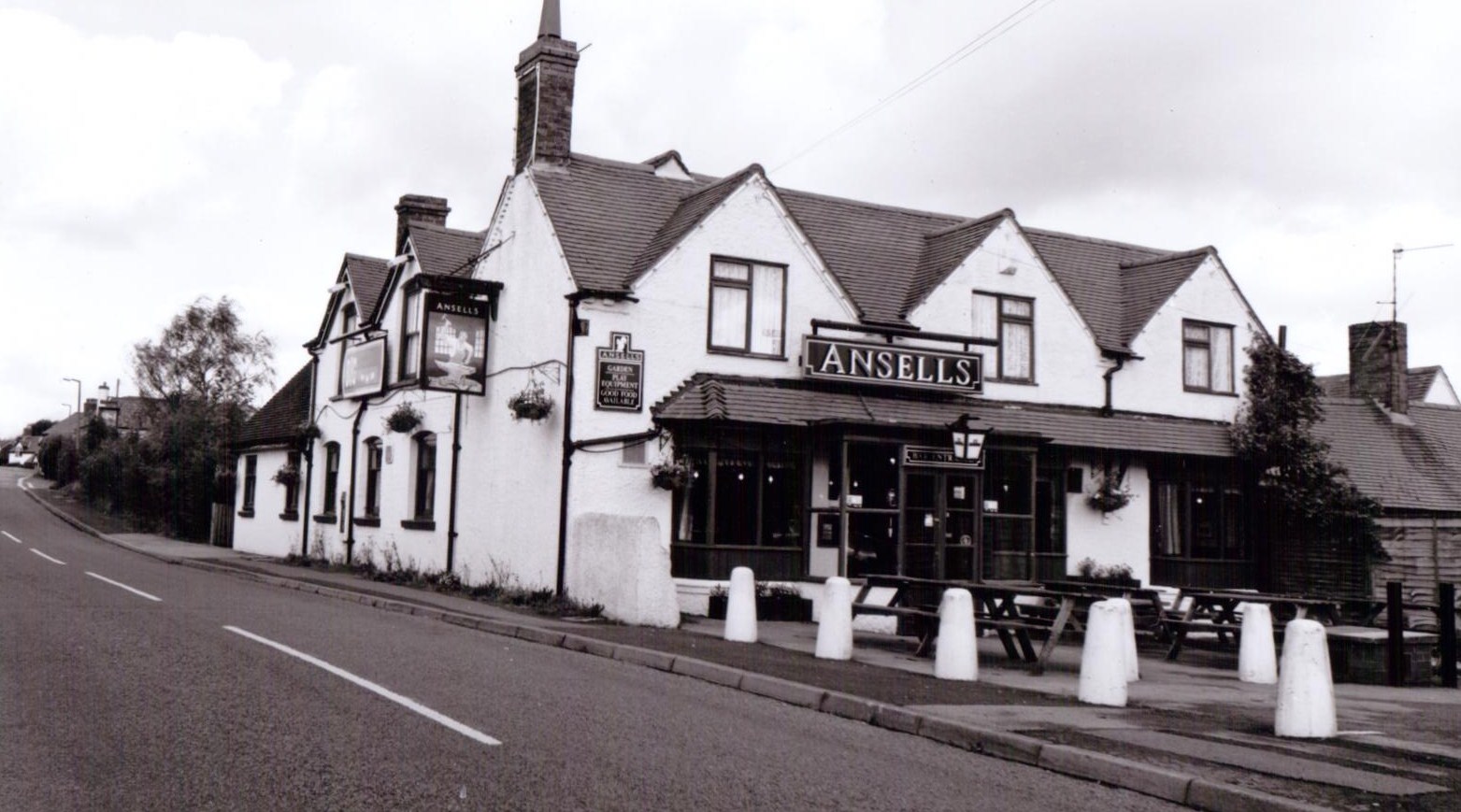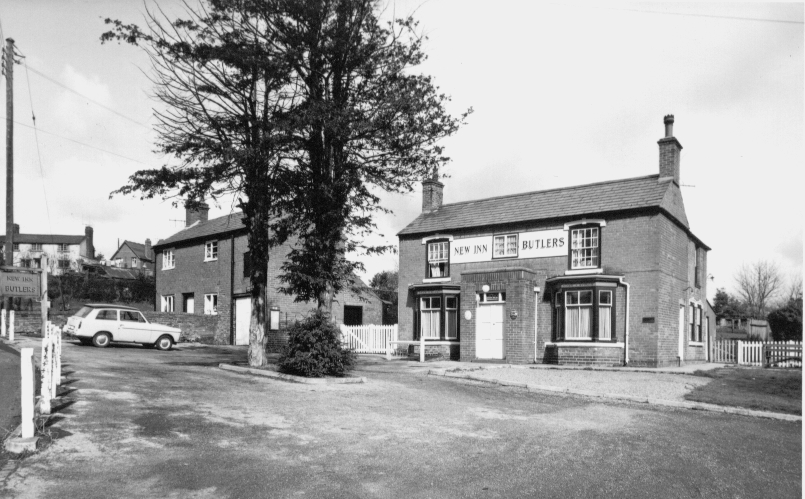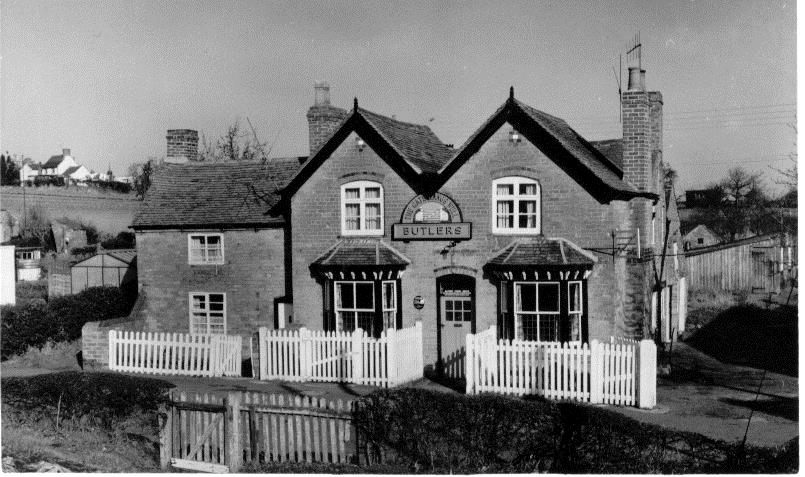BOURNHEATH PUBS
There are three pubs at present in the village, The New Inn, The Nailers’ Arms and The Gate at Bournheath. It is unclear which was established first.
During the Georgian period there was a problem with the over indulgence of gin. Beer on the other hand was considered much more socially acceptable. As a consequence the Alehouse Act of 1828 and the Beer Act of 1830 attempted to address the problem. Under this legislation any householder could sell beer by retail (but no other liquor), without a license, and free from any control, by paying a fee of two guineas to the Excise.
Within three months 25,000 new beer-houses were opened. In the main they were private houses and individuals who had opened up their kitchens and parlours to the public. Many premises were unfit and there were no controls, supervision or regulations, most premises opened all hours of the day or night. Naturally the three pubs mentioned all began in this fashion.

The Nailers Arms – pictured in 1988
The 1851 census lists the site of the New Inn and the Gate Inn as beer-houses but not the Nailers’ Arms, which was occupied domestically by William Chinn, a shoemaker and his family. It was definitely a fully-fledged public house in 1862 when it was put up for sale by auction. The particulars stated it was “a well frequented public house containing a large clubroom, parlour, kitchen, three bedrooms with excellent cellaring, brew-house and open yard”.
In 1873 the licence was passed to Thomas Andrews who together with his wife Mary ran the premises for many years. She must have been a no nonsense kind of woman. On one occasion was charged with assaulting John Banner. It was alleged she struck Mr. Banner inside the pub and knocked him to the floor, pushed him outside, and struck him again to the floor. She denied the charge but was still fined 1s. with 11s. costs.
The Nailer’s Arms has gone through many transformations in the last forty years. In the seventies it was a popular steak restaurant run by Bill Day and Denis Hare. It had a particularly vibrant lunchtime trade being well frequented with middle management from British Leyland, in the days when the lunch “hour” could be stretched over two or three! Its nadir must have been when owners Ansells converted it into a branded “Big Steak” pub. It has since risen again under the stewardship of Phil and Shula Witherford to host a most successful Carvery Restaurant.

The New In
The New Inn hosted a friendly society at its premises during the 19C. Similar to a building society it would lend money on a mortgage to help villagers purchase property. The Worcester Chronicle 1864 reported
It is most notorious for a death that happened on the premises in 1889 resulting from a dispute between two men over a button. Thomas Price and Alfred Waldron began fighting and after three rounds Alfred fell down dead. Despite local insistence that a murder had been committed, the coroner ruled that Price should face the reduced charge of manslaughter.
It was the last pub in the village to resist the service of food until the licensee Pete Cox retired in the 1970’s.

“The Gate Hangs Well” pre 1967.
The Gate at Bournheath has a most interesting history.
The deeds show that Francis Crockett purchased the premises then called “The Stonehouse” (a private dwelling) from Joseph and Ester Crump in 1769. This was some thirty years before the Inclosure Act and as stated previously no one had legal right to private land on the common before 1802. This anachronism is clarified by considering this description of the Manor of Bromsgrove taken from a court roll of King James 1st. It describes all the properties that owed a rental to the Lord of the Manor and concludes “…and also the cottage built upon the waste land, and one small parcel of land by estimation one acre, lying in the place called Barneheath (sic), with gardens and other its appurtenances in the County of Worcester by particular thereof mentioned to be of the yearly rent of two shillings and sixpence”.
This description exactly fits the grounds of The Gate Inn and because Francis Crockett held his property “with appurtenances” he was compensated by his loss of common rights with the award of an adjacent plot of ground now occupied by 44 Dodford Road.
The Crockett family owned the premises throughout the 19C. Francis died in 1827 and his son Michael inherited the property. He had the dubious distinction of being the last person in Bromsgrove to be punished in the pillory (for fraud). He developed the site as a beer-house and four other cottages (two occupied a plot on the present car park). He died in 1862 and bequeathed everything to his nephew John Crockett who kept the properties until 1895 when they were sold to William King Baseley, the great-uncle of Godfrey Baseley, the originator of “The Archers” radio soap.
The property was sold at auction in 1976 to Chris and Jan Lloyd who renovated and built up the business very successfully over the next thirty years. The good work has since continued in the family tradition by their son Gareth and his wife Lucy.
CJL 2014
Deeds of The Gate Inn
Victorian Census 1841-1911 available online at Ancestry.co.uk and findmypast.co.uk
Newspaper Archives of Worcestershire available online at britishnewspaperarchive.co.uk
Photograph of Nailers Arms by Peter Moss
